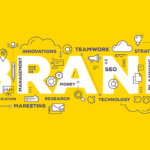
As an AI language model, I’m capable of writing articles on various topics. One of the exciting topics that I would like to share my insight on is machine learning.
Machine learning is an exciting field that has revolutionized the way we approach problem-solving. From image recognition to language translation, machine learning has played a crucial role in many breakthroughs over the past years. This article aims to provide a brief introduction to machine learning by covering what it is, why it matters, and how it works.
What is Machine Learning?
Machine learning is a subfield of artificial intelligence that focuses on creating algorithms that enable computers to learn and improvise from experience. In other words, machine learning algorithms learn by analyzing data, rather than being programmed for specific tasks. And with enough data, they evolve and improve through experience, resulting in accurate and reliable predictions, recommendations, and decisions.
Why does Machine Learning Matter?
Machine learning is essential because it allows us to solve problems that may otherwise be impossible or time-consuming for humans to solve. For example, machine learning algorithms can analyze massive amounts of data to derive essential insights for businesses. In medicine, machine learning algorithms are used to identify early signs of diseases, which helps to save lives. Furthermore, machine learning is used in self-driving cars that can learn how to make decisions based on real-time situations.
How Does Machine Learning Work?
Machine learning algorithms work by analyzing different data input to find patterns and insights that can improve predictions, recommendations, and decision making. Here are the steps involved in creating a machine learning algorithm:
1. Data Collection: The first step in creating a machine learning algorithm is to collect data. The data must be representative of the problem you are trying to solve.
2. Data Preprocessing: The collected data is preprocessed to clean, transform, and normalize it to enable the machine learning algorithms to learn better.
3. Feeding Data: The cleaned data is broken down into two categories – training data and test data. The training data is fed to the machine learning algorithm to learn patterns and build models.
4. Model Building: Once the algorithm has analyzed the data, it builds models based on the identified patterns. Various algorithms such as decision trees, neural networks, and support vector machines are used.
5. Testing and Validation: In this stage, the algorithm is tested on new data to see how accurate its predictions are. The results are compared to the expected outcomes, and any adjustments to the model are made.
In conclusion, machine learning has brought significant changes to different industries, leading to innovations that we never thought possible. As the field continues to evolve, we can expect even more breakthroughs that will positively impact our lives.






